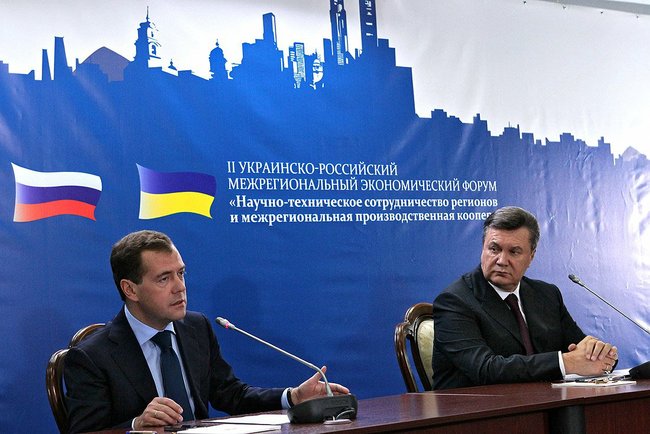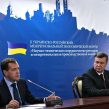
Growing Ukrainian-Russian Arms Export Cooperation
Publication: Eurasia Daily Monitor Volume: 9 Issue: 92
By:

Although President Viktor Yanukovych publicly portrays his foreign policy as multi-vector – balancing between Russia and the West – in reality, there has been a substantial shift in Ukraine’s orientation toward Russia (see EDM, November 3, 2009, January 20, 2010, January 29, 2010). Yanukovych’s multi-vectorism is pro-Russian in contrast to the pro-Western multi-vectorism pursued by President Leonid Kuchma.
After coming to power in February 2010, Yanukovych set in motion policies that would speed up security cooperation with Russia while downgrading the importance of cooperation with NATO that had been a priority for three Ukrainian presidents since January 1994 when Kyiv joined the Alliance’s Partnership for Peace (PfP) program. Chief of the General Staff of Ukraine Colonel General Hryhoriy Pedchenko said, “We have substantially expanded the range of our military cooperation [with Russia]. If last year we had 40 [joint] events, this year there would be 81 events” (UNIAN, January 29, 2011).
Ukrainian-Russian security cooperation has grown in three areas:
First, Russia and Ukraine have reduced their rivalry in the international arms market. Yanukovych established a new arms export agency, Ukroboronprom, which increased presidential control over arms export policies and led to tighter integration with the Russian military-industrial complex (MIC) (Izvestiya v Ukraine, January 12, 2011). Dmitri Salamatin, a Russian citizen until 2005, headed Ukroboronprom until being appointed Ukrainian Minister of Defense this year (see EDM, March 19).
Second, joint ventures between Ukrainian and Russian companies have grown, especially in aircraft and shipbuilding. Ukrainian state-owned aircraft manufacturer, Antonov, transferred its assets to a new Russian-Ukrainian joint venture, OAK (United Aircraft Construction Corporation)-Antonov (Interfax-Ukraine, May 31, 2011). Russia has expressed an interest in cooperating in the entire Antonov aircraft range, especially on An-148, An-158 and An-178 models, Ukrainian Defense Minister Mykhailo Yezhel revealed (Interfax-Ukraine, March 26, 2011). This joint venture could threaten Ukraine’s ability to control the manufacturing and sales of its aircraft.
In addition, Ukrainians have provided parts for Tu-22M3 long-range missile carrying bombers and Tu-95MS strategic bombers, which Russian pilots use to train to fire air-launched cruise missiles (Interfax-AVN, March 8).
Negotiations are on-going to establish a joint venture in shipbuilding as well, because both countries’ shipyards are working under capacity. The Russian Navy’s stationing on Ukraine’s Black Sea coast is also being extended and enlarged. Following the signing of a 25-30 year lease on the Sevastopol base in April 2010, Russia also plans to supply new vessels to the Black Sea Fleet (see EDM, December 7, 2010).
Space cooperation is also long-standing. Ukraine supplies the Zenith-3SLBF booster rocket with a new upper stage Fregat-SB that sends Russian spacecraft from the Baikonur Cosmodrome into orbit. Ukraine’s Pivdenmash (Yuzhmash) facility, which in Soviet times was one of the world’s largest MICs (Kuchma was its last Soviet director), receives many orders from Russia. “We have splendid relations with the Russian space agency,” Pivdenmash director Viktor Shchohol said. “The scale of our cooperation with Russia reaches 70 percent, which boosts output at enterprises in our industry” (Dnepr Vecherniy, January 26, 2011).
Military and civil Ukrainian-Russian nuclear cooperation has existed since the collapse of the USSR, and it is also set to grow, Sergei Kiriyenko, the head of the Russian nuclear energy agency, said. Russia plans to build a nuclear fuel production plant in Ukraine and “there may be interesting joint projects in uranium extraction,” he added (Ukrayinska Pravda, May 23, 2011). Russia expected to invest large sums of money into “TurboAtom,” Ukraine’s leading turbine producing company located in Kharkiv, following the creation of a Ukrainian-Russian nuclear joint venture.
Russian-Ukrainian civil nuclear cooperation is also strongly engaged on the nuclear fuel cycle. Since spring of 2011, Ukraine shipped six tankers, each loaded with 60 tons of liquid missile fuel (mélange), to Russia each month for recycling. In December 2011, 15 kilograms of highly enriched uranium (HEU) was delivered secretly by air from the Kharkiv Physical-Technical Institute (KPTI) to Moscow and transported to the Elektrostal plant near the capital city. The transfer was in accordance with President Yanukovych’s April 2010 commitment to President Barrack Obama to remove HEU stocks from Ukraine. In return, the United States promised to supply low enriched uranium for nuclear research reactors and provide a $25 million investment for the construction of a new nuclear research facility at the KPTI.
Third, Ukraine and Russia have increased their cooperation in countries that were traditional markets for Soviet arms, such as India, and new Russian markets, such as Iran. In the Kuchma era, Ukraine and Russia exported arms to antagonistic neighbors Pakistan and India, respectively. Recently, however, Ukraine signed a contract to supply air-to-air R-27 missiles to India produced by the Ukrainian Artem company. R-27s are used to equip Su-27, Su-30 and Mig-29 fighters, which are being delivered to India from Russia. Russia supports this cooperation because “since Soviet times, missiles of this class have been assembled on the territory of Ukraine, and a large share of the parts for the missiles are supplied from Russia,” said Serhiy Zgurets, an expert at the Ukrainian Center for Research on Army, Conversion and Disarmament (Nezavisimaya Gazeta, April 25).
In 2011, Antonov delivered four upgraded An-32 light transport aircraft to India. In total, 40 of India’s 105 An-32s will be upgraded at the Aviant plant in Kyiv, and another 65 will be upgraded at the Indian Air Force base in Kanpur (Defense-Express, February 11, 2011). The Aviakon aircraft repair plant in Konotop also signed a contract to repair India’s Mi-17, Mi-24 and Mi-35 helicopters.
Ukraine and Russia are now also cooperating in the modernization of Indian BMP-2 infantry fighting vehicles. Spetstekhnoeksport, a subsidiary of Ukrspetseksport, signed a contract with the Indian Defense Research and Development Organization to supply Ukrainian ZTD-2 two-stroke composite engines. The contract is being fulfilled through a Russian-Ukrainian joint venture that will revamp 2,000 BMP-2 engines. Currently installed on the Indian BMP-2s are Russian UTD-20 engines with 280 horsepower. These will gradually be replaced by Ukrainian ZTD-2 engines produced by the Kharkiv engine design bureau. The ZTD-2 engines have 400 horsepower and operate better in high temperatures (Interfax-Ukraine, February 10, March 17, 2011).
Ukraine has even signed a major contract with Iran to assist Russia in fulfilling its contractual requirements in the assembly of An-158 planes in Iran. Parts produced at Kyiv’s Antonov plant will be sent to Voronezh, Russia, where Antonov planes are also assembled under license. Moreover, last year Iran was able to bypass EU sanctions by buying a German Theodor Heuss airbus, used to transport German chancellors, through Ukrainian intermediaries. The plane landed in Kyiv in July 2011 and left for Iran in November with a different tail number registration (Ukraine Business Online, November 7, 2011; Kommersant-Ukraina, November 25, 2011).
President Kuchma’s national security adviser, Volodymyr Horbulin, described Kuchma’s multi-vectorism as “Integration with Europe, Cooperation with the CIS.” Yet, Yanukovych’s multi-vectorism – focused on ever closer economic and defense industry collaboration with Russia – has flip-flopped Ukraine’s multi-vector foreign policy to “Cooperation with Europe, Integration with the CIS.” This trend is likely to have domestic political implications in Ukraine in the coming years.
When Yanukovych comes up for reelection in 2015, he will likely be faced with low approval ratings. Consequently, in order to mobilize the eastern Ukrainian electorate, he will probably propose deeper economic integration with Russia and the CIS, including joining the CIS Customs Union. Such a move will enable Yanukovych to maintain his monopoly of power in Ukraine and be preferable to agreeing to Western demands to release Yulia Tymoshenko and other political prisoners.




